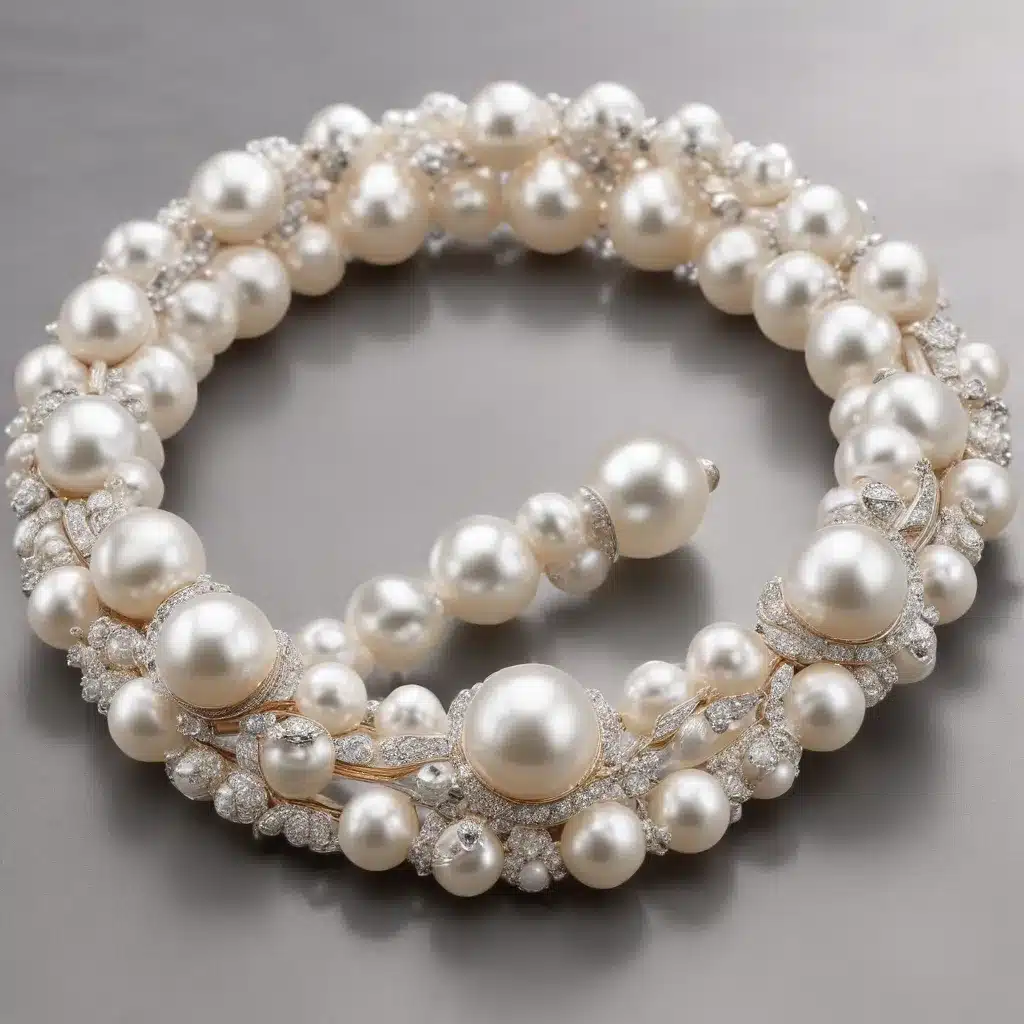
The world of pearls is a captivating realm where nature and human ingenuity converge to create some of the most exquisite gems. At the forefront of this alluring fusion are cultured pearls, the result of meticulous cultivation techniques that have revolutionized the pearl industry.
Oyster Selection and Cultivation
The journey to crafting the perfect cultured pearl begins with the careful selection of oysters or mussels. These mollusks, found in both freshwater and saltwater environments, are the living canvases upon which pearl artistry is established. Skilled pearl farmers meticulously choose the healthiest and most robust specimens, ensuring they can withstand the rigors of the nucleation process and subsequent cultivation.
Pearl Nucleation and Implantation
The nucleus, the core around which the pearl forms, is the heart of the cultured pearl. Pearl farmers delicately implant this nucleus, which is typically made of shell or plastic, into the mantle tissue of the mollusk. The mollusk’s natural response is to coat this foreign object with layers of nacre, the iridescent substance that gives pearls their distinctive luster and beauty.
Oyster Harvesting and Cleaning
Depending on the type of pearl being cultivated, the process can take anywhere from 6 months to several years. During this time, the pearl farmers meticulously monitor the oysters, ensuring they receive the proper nutrition and environmental conditions to promote optimal pearl growth. When the pearls have reached their desired size and luster, the oysters are carefully harvested and the pearls are extracted.
The Science of Cultured Pearls
Pearl Formation and Growth
The formation of a cultured pearl is a remarkable natural phenomenon. As the mollusk coats the implanted nucleus with layer upon layer of nacre, the pearl gradually takes shape and develops its characteristic shine. The thickness of the nacre, as well as the number of layers, are crucial factors in determining the quality and value of the cultured pearl.
The Role of Mantle Tissue
The mantle tissue of the mollusk plays a vital role in the pearl cultivation process. This specialized tissue is responsible for secreting the nacre, and its health and vitality directly impact the overall quality of the cultured pearl. Pearl farmers carefully monitor the mantle tissue to ensure optimal nacre production and the development of pearls with exceptional luster and durability.
Factors Influencing Pearl Quality
The quality of cultured pearls is influenced by a variety of factors, including the water temperature, pH levels, and the presence of specific minerals in the environment. Additionally, the size, shape, and color of the nucleus used can impact the final appearance and value of the cultured pearl. Pearl farmers employ advanced techniques to carefully control these variables, ensuring the creation of pearls that meet the highest standards of excellence.
Cultured Pearl Varieties
Freshwater and Saltwater Pearls
Cultured pearls can be found in both freshwater and saltwater environments, each with their own unique characteristics. Freshwater pearls, cultivated in rivers and lakes, are renowned for their affordability and diverse color palette, ranging from white to pink, purple, and even multicolored. Saltwater pearls, on the other hand, are typically larger and boast a more consistent luster, with Akoya, Tahitian, and South Sea pearls being among the most sought-after varieties.
Color and Shape Variations
The color and shape of cultured pearls can vary greatly, depending on the species of mollusk, the water conditions, and the specific culturing techniques employed. From the classic round pearls to the captivating baroque shapes, each cultured pearl is a singular work of nature’s art, infused with the ingenuity of human craftmanship.
Specialized Culturing Techniques
In the realm of cultured pearls, innovation and experimentation have led to the development of specialized culturing techniques. Some pearl farmers have mastered the art of creating Kasumiga pearls, which exhibit a mesmerizing iridescence, or faceted pearls, which showcase the versatility of these gems. These advancements in pearl cultivation continue to push the boundaries of what is possible, offering gem enthusiasts and jewelry designers a diverse array of options to explore.
Sustainability in Cultured Pearl Production
Environmental Considerations
As the demand for cultured pearls continues to grow, pearl farmers have become increasingly mindful of the environmental impact of their practices. Sustainable farming methods, such as water conservation and the use of eco-friendly materials, have become a top priority in the industry, ensuring the long-term viability of pearl cultivation.
Ethical Harvesting Practices
Responsible pearl harvesting is another crucial aspect of sustainable cultured pearl production. Pearl farmers work to ensure the well-being of the mollusks, employing ethical practices that minimize stress and maximize the chances of the oysters or mussels surviving the harvesting process. This commitment to animal welfare is a testament to the industry’s dedication to both quality and sustainability.
Responsible Cultivation Methods
Advancements in pearl cultivation techniques have also contributed to the industry’s focus on sustainability. By optimizing water quality, controlling environmental factors, and implementing innovative farming methods, pearl producers are able to cultivate pearls with minimal impact on the surrounding ecosystems. This holistic approach to pearl cultivation ensures that the beauty and luster of these precious gems can be enjoyed for generations to come.
The world of cultured pearls is a captivating realm where nature and human ingenuity converge to create some of the most exquisite gems. From the meticulous selection of mollusks to the intricate cultivation processes, the journey to crafting flawless pearls is a testament to the dedication and innovation of pearl farmers. As the industry continues to evolve, embracing sustainable practices and pushing the boundaries of what is possible, the allure of cultured pearls will undoubtedly continue to captivate gem enthusiasts and jewelry designers alike. Explore the wonders of cultured pearl production with Shelby Gem Factory, where the fusion of nature and craftsmanship creates truly exceptional gems.

